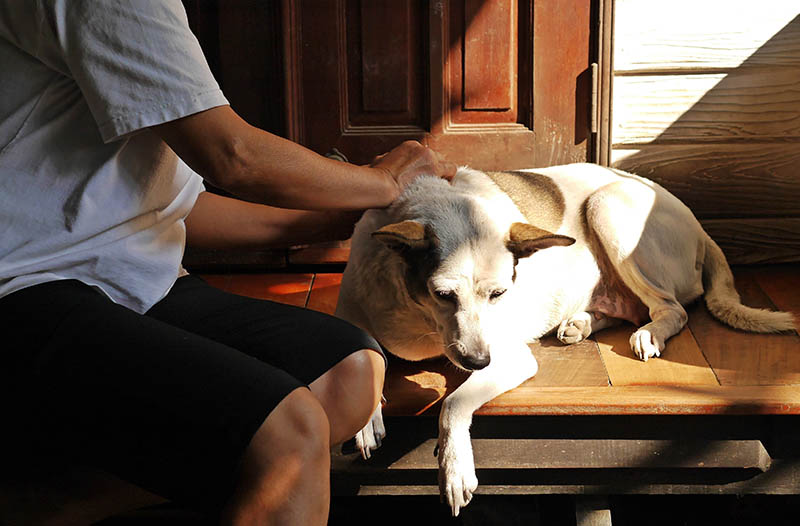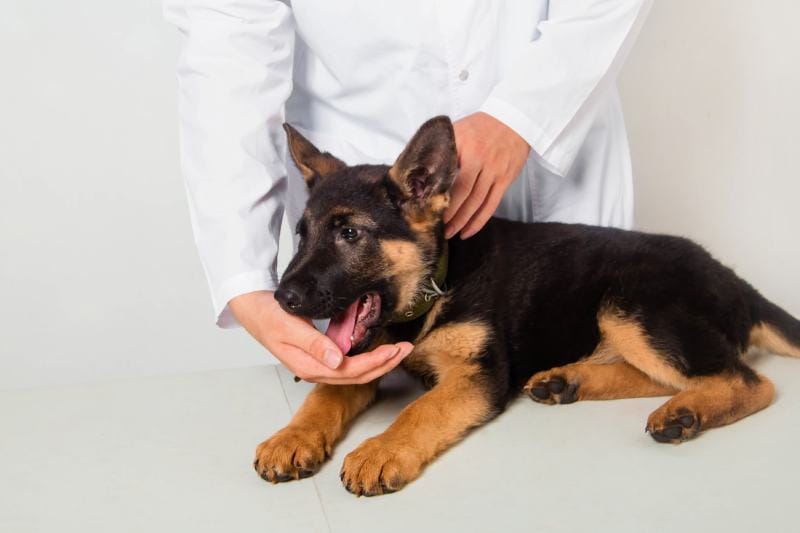What Do Skin Tags Look Like on Dogs? Vet Approved Facts & FAQ
Updated on

Click to Skip Ahead
A skin tag is a growth that occurs on your pet’s skin. In many cases, there is no universal appearance for them, as it can vary from dog to dog. Many skin tags may look like ticks, for instance (except they will have no legs—that’s how you tell the difference).
Generally, skin tags look just like you’d imagine them. They appear to be pieces of skin that are growing off of your dog’s skin. They’re typically a bit “flappier” than a mole and aren’t quite as attached.
Most skin tags are absolutely harmless. However, they can be cancerous in some situations. Treatment is not always needed. However, you still usually need to speak with your vet about the possibility of it being a cancerous growth.
 What Are Skin Tags?
What Are Skin Tags?
Skin tags are simply growths on the surface of your pet’s skin. They are referred to under many different names, including fibroepithelial polyps and acrochordons. Usually, they are the same color as your dog’s skin, but they can sometimes be darker.
Usually, they are flat and connected by only a small amount of tissue. This feature is what makes them tags and not moles or warts. They look very similar to a clothing tag (though much smaller, usually).
Most dogs get skin tags at some point in their life, as do most people. However, most of them are completely harmless and don’t need any treatment.
What Causes Skin Tags?
Most of the time, we won’t know exactly what caused your dog’s skin tag. Usually, an underlying cause is not known or sought—as most skin tags are completely harmless. However, there are several potential explanations for why these small growths occur.
- Many skin tags occur in high-friction areas, like in the armpits and around the collar. Therefore, it is thought that friction may play a role. This is why it is important that your dog’s collar fits correctly. Of course, these skin tags cannot always be prevented.
- The irritation, inflammation, and discomfort caused by external parasites such as fleas can create the perfect environment for the overproduction of fibrous tissue. This can result in the appearance of skin masses such as skin tags.
- Papillomaviruses. We know that these viruses are linked to warts and skin growths in people and animals.
- Poor Hygiene. In many cases, poor hygiene may cause skin tags in dogs. For instance, you may wash your dog too much or not enough. Either way, it may irritate the skin and cause skin tags. Using inappropriate soaps can also cause skin damage and lead to skin tags.
- Genetic dispositions. Some breeds and family lines are more prone to skin tags than others. Therefore, there may not be anything you can do in some situations.
- Environmental factors. Some environmental factors that we have yet to discover may also play a role in skin tag formation. For instance, pesticides and harsh chemicals can damage the skin and lead to skin tags.
Treating Skin Tags in Dogs
Luckily, most skin tags do not need to be treated. Usually, a vet can look at a skin tag and determine that it is benign. Occasionally, a biopsy may be needed to ensure that the skin tag isn’t cancerous. If it is, your dog will likely need to be treated for cancer and the whole tag removed.
However, this is rarely the case. Most skin tags are harmless and left alone. As long as it isn’t causing your dog any problems, you can go about your life without worrying about it.
With that said, if the skin tag is extremely large or causes discomfort, the vet may recommend removal. In this case, your dog may need to go under a general anesthetic to keep them calm during the procedure. Some dogs may be calmed with medication—not general anesthesia. It depends on your canine and the location of the tag.
Often, the vet will simply tie it off or clip the skin tag away with surgical scissors. The resulting wound is usually very small and unnoticeable. In the case with very large skin tags, stitches may be required, though.
Rarely, cryotherapy may be recommended. Basically, this is where the skin tag is frozen off. It is similar to wart removal.

 Conclusion
Conclusion
Skin tags can be difficult to visibly notice due to all of our dog’s fur. Usually, owners feel them first and then get a closer look. However, even then, it can be difficult to figure out exactly what a skin tag is.
Luckily, vets are trained to recognize skin tags and determine if they are harmful or not. Therefore, if you think your dog has a skin tag, it is best to contact your vet for an appointment. It is vital that it gets checked to ensure that it is not cancerous, which requires prompt treatment.
Usually, though, skin tags can be left alone. They only need to be removed if they are causing your dog pain or discomfort. Usually, this involves putting your dog under a general anesthetic and cutting the tag off. It is a nearly painless and very simple procedure. Most dogs do not even need stitches.
See also:
- Vet-Reviewed Dog Skin Problems & Their Treatments (With Pictures)
- Dog Breeds Prone to Skin Problems (Vet-Approved Facts)
Featured Photo Credit: Parichart Patricia Wong, Shutterstock

 What Are Skin Tags?
What Are Skin Tags?









